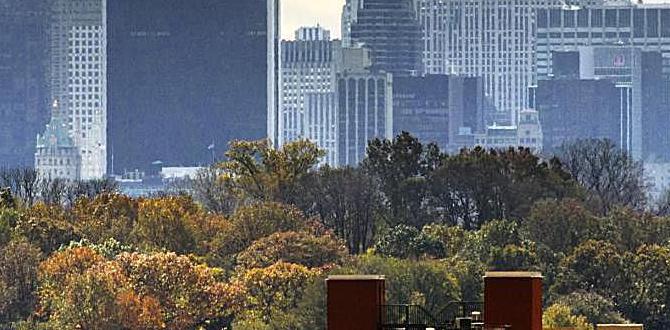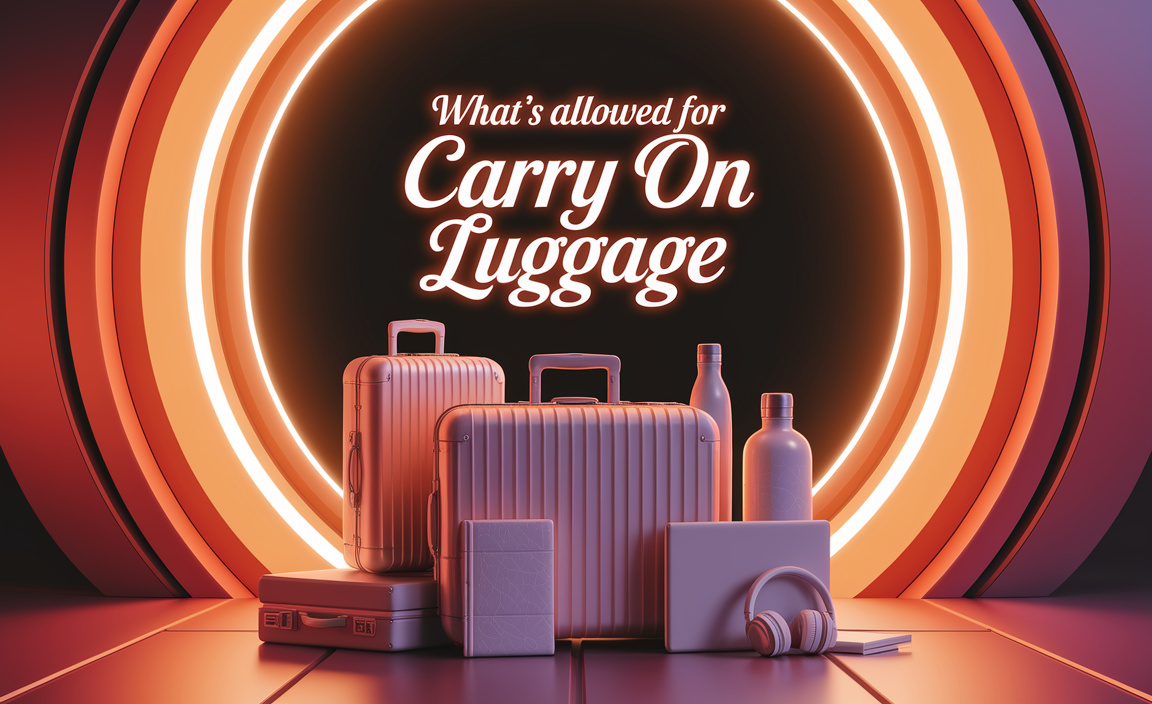Ensure your Blue Mountains adventure is safe and enjoyable by recognizing common scams and avoiding typical traveler mistakes. This guide covers essential tips on preparedness, financial security, and respecting the natural environment to prevent issues and make your trip memorable for all the right reasons.
Hello fellow adventurers! Michael C. Herrera here from Journey Essentials. Planning a trip to the breathtaking Blue Mountains should be exciting, not overwhelming. Sometimes, the most beautiful places can present unexpected challenges.
Travelers can fall victim to scams or make simple mistakes that can put a damper on their experience. But don’t worry, with a little preparation, you can easily navigate these potential pitfalls. We’re going to break down the most common issues and give you clear, easy-to-follow advice. Get ready to explore the Blue Mountains with confidence and peace of mind!
Understanding Blue Mountains Safety: Avoiding Scams and Common Mistakes
The Blue Mountains, with its stunning vistas, ancient forests, and unique wildlife, is a dream destination for many. However, like any popular tourist spot, it’s wise to be aware of potential scams and common errors in judgment that can arise. Being informed is your best defense for a stress-free and genuinely enjoyable journey. This guide is designed to equip you, the savvy traveler, with the knowledge to navigate the Blue Mountains safely and confidently, ensuring your focus remains on the incredible natural beauty.
Common Scams and How to Avoid Them
While the Blue Mountains is generally a safe place, it’s always good to be aware of potential scams targeting tourists. These are often less about grand deceptions and more about exploiting the trust of visitors. Staying vigilant is key.
1. Overpriced or Non-Existent Tours
Some unofficial operators might approach you offering “exclusive” or “last-minute” tours at attractive – or deceptively high – prices. These tours might be poorly organized, not as advertised, or some might not even happen. Always book tours through reputable companies or your accommodation provider. Check online reviews and look for official accreditation.
2. “Free” Souvenir Scams
Be wary of anyone offering you a “free” souvenir or sample of local goods, especially in busier areas. Often, there’s an expectation of a hefty purchase or tip afterward, with pressure to comply. It’s best to politely decline and make your souvenir purchases from established shops.
3. Unsolicited “Help” with Navigation or Tickets
Individuals might offer to help you book tickets or find directions, then demand payment or try to lead you to overpriced businesses. Official tourist information centers are the best place for reliable advice and assistance. If someone seems too eager to help, it’s often a sign to be cautious.
4. Local Currency Misrepresentation
While less common in organized businesses, instances of misrepresenting exchange rates for currency can occur. Always clarify the exact amount you will receive in Australian Dollars (AUD) before any transaction, and use official exchange bureaus or ATMs associated with reputable banks.
Pro Tip: If a deal seems too good to be true, it probably is. Trust your instincts and stick to established businesses for bookings and purchases.
Essential Mistakes Travelers Make (and How to Avoid Them)
Beyond scams, many issues travelers face in the Blue Mountains stem from simple oversights or a lack of preparation. These common mistakes can lead to discomfort, minor inconveniences, or even safety hazards. Let’s cover how to sidestep them.
1. Inadequate Preparation for Weather
The Blue Mountains weather can change rapidly. Even on a sunny day, temperatures can drop significantly, especially at higher altitudes or as evening approaches. Rain showers can appear quite suddenly. Not packing layers or waterproof gear is a frequent mistake.
- Solution: Always pack layers of clothing. Include a waterproof and windproof outer shell. Check the weather forecast right before you leave, but be prepared for variations. Comfortable, sturdy walking shoes are a must.
2. Underestimating Walking Trails and Difficulty
Many stunning lookouts are easily accessible, but some of the most rewarding walks, like the Grand Canyon track or sections of the Six Foot Track, are more challenging than they appear. People often underestimate the time, physical exertion, and potential hazards (like uneven terrain and steep sections).
- Solution: Choose trails that match your fitness level. Read trail descriptions carefully and check their length and elevation gain. Inform someone of your hiking plans, including your intended route and estimated return time. For longer hikes, consider carrying a map and compass or using a reliable GPS app. The NSW National Parks and Wildlife Service provides detailed information on trails and their difficulty.
3. Insufficient Water and Food
Staying hydrated is crucial, especially when hiking. Dehydration can lead to fatigue, headaches, and poor decision-making. Similarly, not carrying enough snacks can lead to low energy and a less enjoyable experience.
- Solution: Carry more water than you think you’ll need. Reusable water bottles are ideal. Pack high-energy snacks like nuts, fruit, and energy bars. For longer hikes, plan for a packed lunch.
4. Not Informing Anyone of Your Plans
This is a critical safety lapse, particularly for solo travelers or those undertaking longer walks. If something goes wrong – an injury, getting lost, or unexpected delays – having someone know your itinerary can be vital for a timely rescue.
- Solution: Tell your accommodation provider, a friend, or family member where you are going, which trails you plan to take, and when you expect to be back. This applies to day trips as well as multi-day hikes.
5. Ignoring Wildlife and Environmental Guidelines
The Blue Mountains is home to unique and sometimes sensitive wildlife. Feeding animals, leaving your camp a mess, or straying from marked paths can harm the ecosystem and is often against park rules.
- Solution: Observe wildlife from a distance. Never feed animals, as it can disrupt their natural diet and behavior and make them habituated to humans, leading to potential conflicts. Stick to marked trails to protect fragile vegetation and prevent erosion. Take all your litter with you (“Leave No Trace”).
6. Traveling Without Adequate Mobile Coverage Awareness
While many popular areas have mobile reception, it can be patchy or non-existent in more remote parts of the Blue Mountains National Park. Relying solely on your phone for navigation or emergencies can be risky.
- Solution: Download offline maps before you go. For longer or more remote treks, consider carrying a personal locator beacon (PLB) or satellite phone.
7. Financial Mismanagement (Cash vs. Card)
While cards are widely accepted, some smaller businesses, remote cafes, or entry fees might be cash-only. Also, relying solely on cards means you need to be mindful of ATM availability and fees.
- Solution: Carry a reasonable amount of cash for smaller purchases or emergencies. Ensure you know which cards are accepted by your intended places of visit. Inform your bank of your travel dates to avoid any card security blocks.
Planning Your Blue Mountains Adventure: Key Considerations
A well-planned trip is a safe trip. Breaking down your preparation into key areas ensures you’re ready for the wonders and potential challenges of the Blue Mountains.
1. Accommodation and Booking
Book your accommodation well in advance, especially during peak seasons. This applies to hotels, guesthouses, and even campsites. Secure your bookings through official websites or trusted travel agencies to avoid fraudulent listings. Always read the cancellation policies.
2. Transportation
Consider how you’ll get around. Driving offers the most flexibility, but parking can be an issue in popular towns like Katoomba or Leura. Public transport (trains and buses) is available but might limit your access to more remote trailheads. Researching public transport routes and timetables is essential if you’re not driving.
For those who might need extra comfort and convenience during their travels, especially with younger children or personal care needs, exploring options like travel-friendly adult diapers or discreet child diapers can significantly reduce stress. Knowing these needs are met allows for a more relaxed focus on the journey itself. Companies specializing in discreet and comfortable personal care products understand the importance of this for travelers.
3. Essential Gear Checklist
Your packing list should be tailored to your planned activities. Here’s a general guide for day trips and moderate hiking:
| Category | Essential Items |
|---|---|
| Clothing | Layered tops (thermals if cold), fleece jacket, waterproof/windproof jacket, comfortable trousers, sturdy walking socks, hat, gloves, scarf. |
| Footwear | Comfortable, broken-in hiking boots or sturdy walking shoes. |
| Navigation | Map and compass (and knowledge of how to use them), GPS device or smartphone with offline maps. |
| Safety & First Aid | Basic first-aid kit (band-aids, antiseptic wipes, pain relievers, blister treatment), insect repellent, sunscreen, sunglasses, whistle. |
| Food & Water | Plenty of water (at least 2 litres per person for a day hike), high-energy snacks, packed lunch. |
| Other | Backpack, fully charged mobile phone, power bank, small amount of cash, valid ID. |
4. Emergency Preparedness
Know how to contact emergency services in Australia. The general emergency number is Triple Zero (000). For parks, the NSW National Parks Ranger contact details are also crucial. Familiarize yourself with basic first-aid practices.
The NSW State Emergency Service (SES) offers valuable advice on preparing for various emergencies, including those that might be encountered in outdoor environments.
Understanding Local Regulations and Etiquette
Respecting local rules and customs ensures a pleasant experience for everyone and helps preserve the natural beauty of the Blue Mountains.
- Park Entry Fees: Some areas within the Blue Mountains National Park may have vehicle entry fees. Ensure you’re aware of these to avoid fines. Information is usually available at park entrances or online.
- Fire Restrictions: During dry periods, fire bans are often in place. Always check current fire danger ratings and adhere to all restrictions. Campfires are only permitted in designated areas where allowed.
- Leave No Trace: This principle is paramount. Pack out everything you pack in, including food scraps. Stay on marked trails to protect the environment. Minimize your impact on wildlife.
- Noise Levels: Be mindful of other visitors and the natural tranquility of the area. Keep noise levels down, especially in shared accommodation or during quiet hours.
Table: Common Tourist Zones and Potential Pitfalls
Understanding where you’ll be can help you anticipate specific safety needs.
| Zone/Town | Typical Scams/Mistakes to Watch For | Key Safety Considerations |
|---|---|---|
| Katoomba / Echo Point | Overpriced souvenirs, tourist trap restaurants, aggressive hawkers for “deals.” | Crowded areas, watch belongings, stick to well-reviewed establishments. |
| Scenic World | Over-selling of package deals, long queues. | Book tickets in advance online to potentially save time and money. Understand what your ticket includes. |
| Bushwalking Tracks (e.g., Grand Canyon, Wentworth Falls) | Underestimating trail difficulty, insufficient water/food, not informing anyone of plans, getting lost. | Check trail status, carry essentials, inform someone, know emergency numbers. |
| Residential Areas / Smaller Villages (e.g., Leura, Wentworth Falls) | Less likely for scams, but be aware of isolated areas if hiking nearby. | Plan routes carefully, be mindful of changing weather. |
| Car Parks / Lookouts | Opportunistic petty theft from unattended vehicles. | Do not leave valuables visible in your car. Lock doors. |
Conclusion
The Blue Mountains offers an unparalleled natural experience, and with a little foresight and preparation, you can ensure your visit is both safe and wonderfully memorable. By being aware of potential scams and common traveler mistakes, and by following the guided steps for planning and preparedness, adventure-seekers of all kinds can explore this magnificent region with confidence.
Remember to always check local conditions, inform someone of your plans, pack smart, and respect the environment. Your journey into the heart of the Blue Mountains should be one of discovery and joy, unmarred by preventable issues. Pack your bags, embrace the adventure, and create lasting memories in this unique Australian paradise!
Frequently Asked Questions
What is the most common scam in the Blue Mountains?
The most common scams often involve overpriced or misleading tour packages and unsolicited offers for items or services at inflated prices. Always book through official channels and be wary of deals that seem too good to be true.
Is it safe to hike alone in the Blue Mountains?
Hiking alone is possible in well-trafficked areas if you are experienced and well-prepared. However, it significantly increases risk. It’s always safer to hike with a companion. If you must go solo, inform someone of your exact plans and carry safety equipment like a PLB.
What should I do if I get lost in the Blue Mountains?
If you realize you are lost, stay calm and stay put. Try to retrace your steps if you are certain of the way. If not, find a safe spot, conserve your energy, and use your whistle (three short blasts is an international distress signal) or mobile phone to call for help. Conserve your phone battery.
Are there any specific safety concerns for families with children?
Families should pay extra attention to trail difficulty and length, ensuring children have appropriate footwear and are supervised at all times, especially near lookouts and cliff edges. Carry plenty of snacks and water, and be prepared for sudden weather changes. For very young children, consider comfortable carriers for walks.
What happens if I get injured on a walking track?
If you or someone in your group sustains an injury, assess the severity. If it’s minor, administer basic first aid. For serious injuries, call Triple Zero (000) immediately or alert park rangers. Do not attempt to move someone with a serious injury unless they are in immediate danger. Wait for professional help.
How can I ensure my personal comfort and dignity while traveling with medical needs, like incontinence?
For those managing incontinence, investing in high-quality, discreet adult diapers or child diapers designed for comfort and absorbency can make a huge difference. Brands that offer breathable materials and secure fits can prevent leaks and skin irritation, allowing you to focus on exploring. Planning ahead and packing an adequate supply is key to peace of mind.
What are the rules about interacting with wildlife in the Blue Mountains?
It is strictly forbidden to feed or approach wildlife. This is crucial for their health and safety, as well as yours. Feeding animals can make them dependent on humans, aggressive, and can spread disease. Observe them from a safe distance and never leave food scraps behind.




